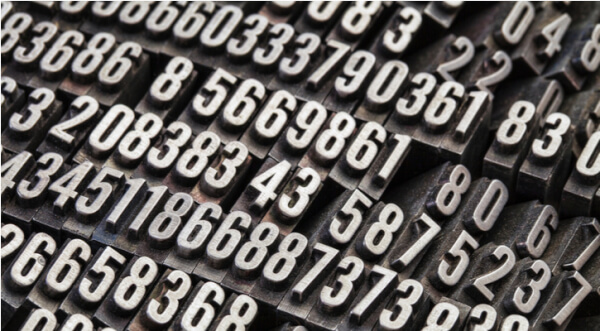How do I transfer money from my U.S. bank account? (Full guide)
If you want to transfer money to your US bank account, but not sure how, you've come to the right place. In this guide, we'll show you the answer.

Opening a bank account and getting acquainted with different types of money transactions can already be a lot without all the acronyms involved.
In this guide you’ll find all the definitions you’ve been looking for and a full breakdown of the most important payment and routing number types you need to be aware of.
We’ll also touch base on Wise as an alternative option for you to send money internationally — and to apply all the knowledge you gathered with this article.
So let’s get started.
All these acronyms can be a tad overwhelming, so let’s break them down a little bit:
| Acronym | Meaning |
|---|---|
| ABA | American Bankers’ Association |
| ACH | Automated Clearing House |
| EFT | Electronic Funds Transfer |
There are lots of different banks in the US, but they’re all connected together via a system of numbers they call ‘routing numbers’.
Routing numbers are a bit like postal codes — but for banks. Using these numbers, there are several different ways that payments can be made between banks.
Here are a few terms relating to transferring money — you’ll find all of them discussed below.
- EFT
- Electronic checks
- Paper checks
- ACH
- Wire
- Direct / Bank debits
Different types of payments may require different bank routing numbers, and, just like if you put the wrong zip code on a letter, your transfer might even fail if you use the wrong one.
However, you’ll want to keep in mind that the numbers discussed in this article refer to your bank, not to you personally. Just like 5 digit zip codes, these 9-digit routing numbers aren’t unique to you.
To receive a payment, you’ll have to provide further information as well as the routing number that can identify you as an individual.
EFT stands for Electronic Funds Transfer, and it refers to any payment from one bank account to another that’s made electronically.
| EFTs encompass: |
|---|
|
EFT is a very broad term — the main point is simply that no bills or coins are exchanged. In the US these transfers are sometimes called electronic checks or echecks — it’s the same thing.
The benefits of EFT payments are like the benefits of technology generally: paying electronically simplifies the process for you and cuts down on administrative costs.
There are many different types of EFT payments, so you’ll encounter them in contexts that will feel very different from each other — from buying groceries to receiving your salary. What they all have in common is that they begin with the payer applying for and authorizing the payment.
Once the bank details have been sent, the payer has the money taken from their account. That money is credited to the receiving bank, which pays the beneficiary. So the bank balances change, but they communicate electronically, and there’s no physical movement of money.
| Read our full guide on what is EFT payment |
|---|
If all you want to do is make a fast, secure and low cost international transfer, Wise can help you.
Sending money through your bank — or through a normal money transfer service — means that you can get stuck paying more because of poor exchange rates, not to mention costly fixed fees.
Some American banks don’t offer transfers online at all, meaning that you have to make a special trip to your local branch to sort it out. If you’re abroad, that can be prohibitive.
Wise does everything online and uses the mid-market exchange rate — like the one you’ll find on Google — and only charges one transparent, low fee.
ACH transfers are a type of electronic transfers (EFT) which include direct debits and direct deposits:
With an ACH direct debit, you authorize another person or organization to take money from your bank account on a regular basis.
With an ACH direct deposit, someone else can pay you.
Unlike wire transfers — which we’ll cover later — banks process ACH payments in a batch. That can make them relatively slow — but also fairly cheap. So if you’re not in a rush, an ACH payment might be a good option.
To transfer money internationally with a bank, you’ll normally need to make a wire transfer as the ACH system is predominantly offered by banks for payments within the US only.
However, wires can sometimes be difficult to make and can be quite expensive. There’s more information on wire transfers below — and also on non-bank alternatives like Wise.
Wise uses a different approach to international payments compared to banks, which could well work out cheaper for you.
Their technology connects local bank accounts all over the world so customers in America send money to Wise’s bank account in the US, and then Wise pays out from their networked account in the destination country, in the currency needed.
This cuts down on expensive international transfer fees and makes payments faster. It also lets them accept ACH payments for your international transfers.
| Read our full guide on what is ACH |
|---|
Another acronym you may have come across is ABA — this stands for American Bankers Association. It’s the trade body which represents banks and all sorts of other financial service providers like trusts and community savings associations.
ABA is involved in a lot of things connected to the banking industry, including creating best practices, lobbying — and, importantly, managing ABA routing numbers.
ABA numbers are codes assigned to banks by the American Bankers Association. Each American bank has its own ABA number, so they’re sometimes just called bank routing numbers.
Big banks may use a number of ABA routing numbers — the one you need will depend on exactly where you’re based.
| 🔢 The different digits all represent something particular: |
|---|
|
ABA numbers can change if your bank is taken over by another bank. If that does happen, you’ll need to make sure everyone you regularly pay — and everyone who pays you — has the new number. You’ll also need a new check book.
Don’t fall into a common trap: sometimes banks require you to use different routing numbers for different sorts of transfers. It varies from bank to bank, but they may have different numbers for paper transfers, electronic transfers and wire transfers.
All routing numbers are ABA numbers — but you may also have what’s commonly called an ACH number. That’s actually an ABA number used solely for ACH transfers.
| ABA | ACH |
|---|---|
|
|
Check with your bank whether you can use the same number for all types of transfers, or if you need different ones. You’ll be able to find this out easily by asking in a branch, using your bank’s online FAQ, or logging into your online banking and starting a customer service chat.
| Learn further with our full guide to what is ABA number |
|---|
A check is a written instruction ordering the transfer of a certain amount of money from one bank account to another.
Checks used to be very common, but are less popular today because of the rise of electronic payment methods.
If you receive a check, take it down to your bank and you’ll be able to pay it into your account (sometimes called “cashing a check”) with the help of a bank teller.
There’s a chance that you might be able to cash it at an ATM, but that’s a bit more complicated.
If it’s your first time, you’re better off going to your bank in person, or through their drive-thru if they offer it, to pay the money from the check into your bank account.
| Paying by check? Read our full guide on writing a check |
|---|
The 9-digit routing number on your checks is an ABA routing number.
You can generally use this for paper transfers, electronic checks or deductions, and possibly — not necessarily — for other sorts of transfers.
If you need a routing number for an ACH transfer, or especially for a wire transfer, check with your bank first.
Wire transfers — these days — are electronic funds transfers. However, they got their name from when they first came into being, and instructions were literally passed down a wire, through the telegraph system.
Wire transfers are usually faster compared to ACH payments which we looked at earlier. They’re processed one by one rather than in a batch, although you’ll need to check your bank’s cut off times as missing these can slow your money down.
Wire transfers are usually more expensive than an ACH, so more commonly used when sending a large amount of money, sending an international payment, or sending money in a hurry.
Domestic wire transfers are time-honored ways to get your money from one bank to another, but banks often charge considerably for the service.
And they can sometimes be an inconvenience, as some American banks still don’t offer wire transfers online.
Once you’ve ordered a wire transfer, your bank will connect with the destination bank and transfer the funds — normally much faster than an ACH transfer as long as you make your bank’s cutoff times.
The principle of international wire transfers is exactly the same as for domestic ones, but the process is a lot more complicated and often involves intermediary banks connecting the sender to the receiver.
The basic process is that your money travels from your bank to the recipient’s bank, via 1 - 3 intermediary banks, through the SWIFT network.
This is reliable, but can be slow — and the intermediary banks can also deduct a fee as they process the payments, meaning your recipient gets less than expected in the end.
If you’re receiving an international wire transfer, you might need to provide a SWIFT code rather than a routing number. Check with your bank about what they use, or you can look it up online.
💡 Need to make a business payment? Pay international vendors and bills with ease with a Wise Business account.
| Some key features of Wise Business include: |
|---|
|
Discover the difference between
Wise Business vs Personal
If you’re receiving a domestic wire transfer within the US, you might need to give your payer a different routing number than the one on your checkbook.
The wire routing number, still technically an ABA routing number, is a 9-digit code like the ones already discussed.
You’ll need to check directly with your bank what number you should give — it might be the same as the ACH number and/or the routing number on your checkbook, but it might not.
If you’re receiving a wire transfer from another country, you might not need a routing number at all. Instead, it’s likely you’ll need to give them your bank’s SWIFT code, which you can find out from them or look up online.
| Ever wonder what a wire transfer is? Find all you need to know in this handy guide |
|---|
However you choose to send your money, good luck in navigating the complex world of ETFs and routing numbers — and don’t let the banks get in the way of your transfer.
*Please see terms of use and product availability for your region or visit Wise fees and pricing for the most up to date pricing and fee information.
This publication is provided for general information purposes and does not constitute legal, tax or other professional advice from Wise Payments Limited or its subsidiaries and its affiliates, and it is not intended as a substitute for obtaining advice from a financial advisor or any other professional.
We make no representations, warranties or guarantees, whether expressed or implied, that the content in the publication is accurate, complete or up to date.

If you want to transfer money to your US bank account, but not sure how, you've come to the right place. In this guide, we'll show you the answer.

What are BSB numbers in banking & how do they work? Do you want to find out more about BSB codes? Read more here.

Your full guide to what is SWIFT and its meaning in banking.

Sending money abroad should be easy, but there might be some terms you aren't familiar with. So, we'll show you the difference between IBAN vs SWIFT codes.

IOF is a tax on various types of financial transactions in Brazil — including foreign exchange, investments, and credit. It’s levied at a range of rates...

Moving to Peru, or already there? You’ll need to brush up on how residency and citizenship works for foreign nationals living in the country. It centers...